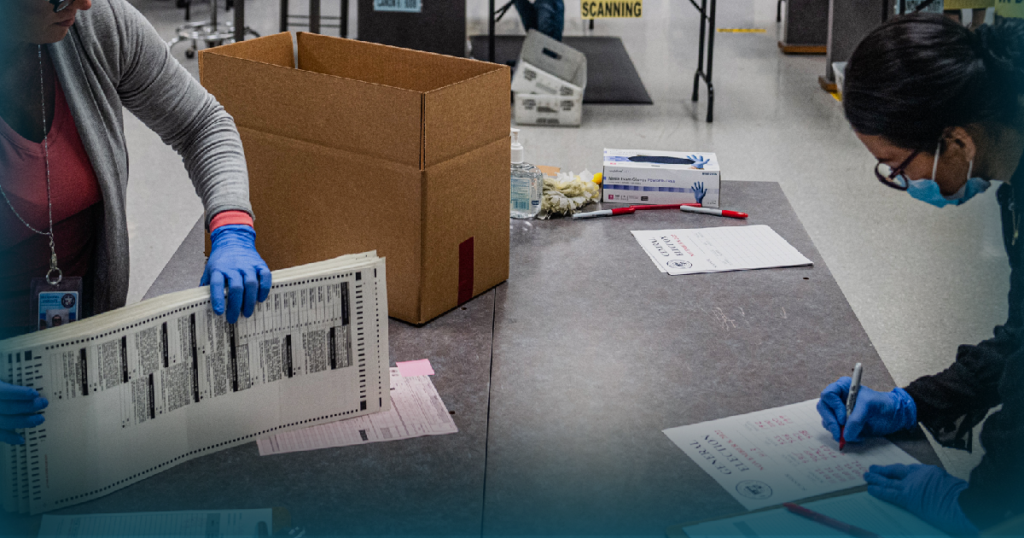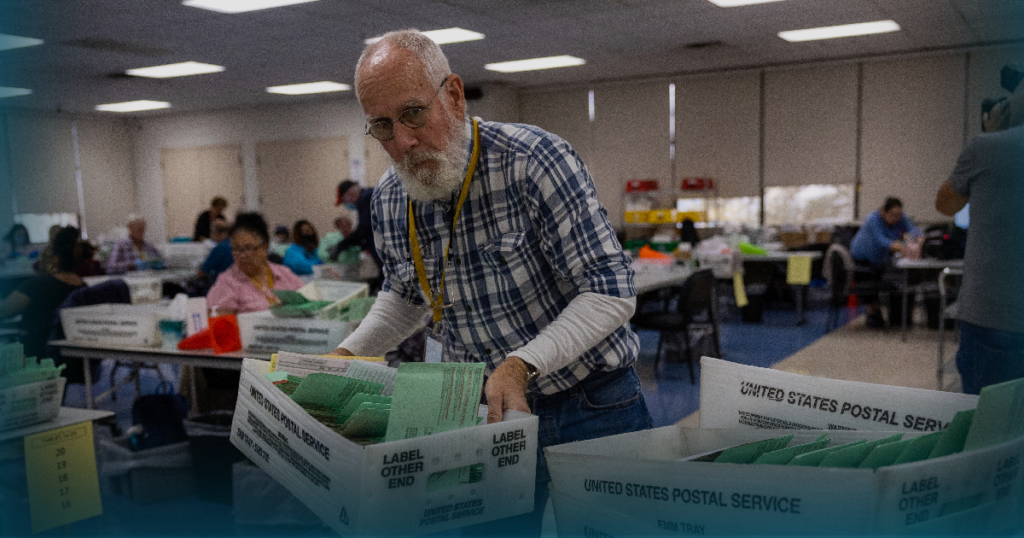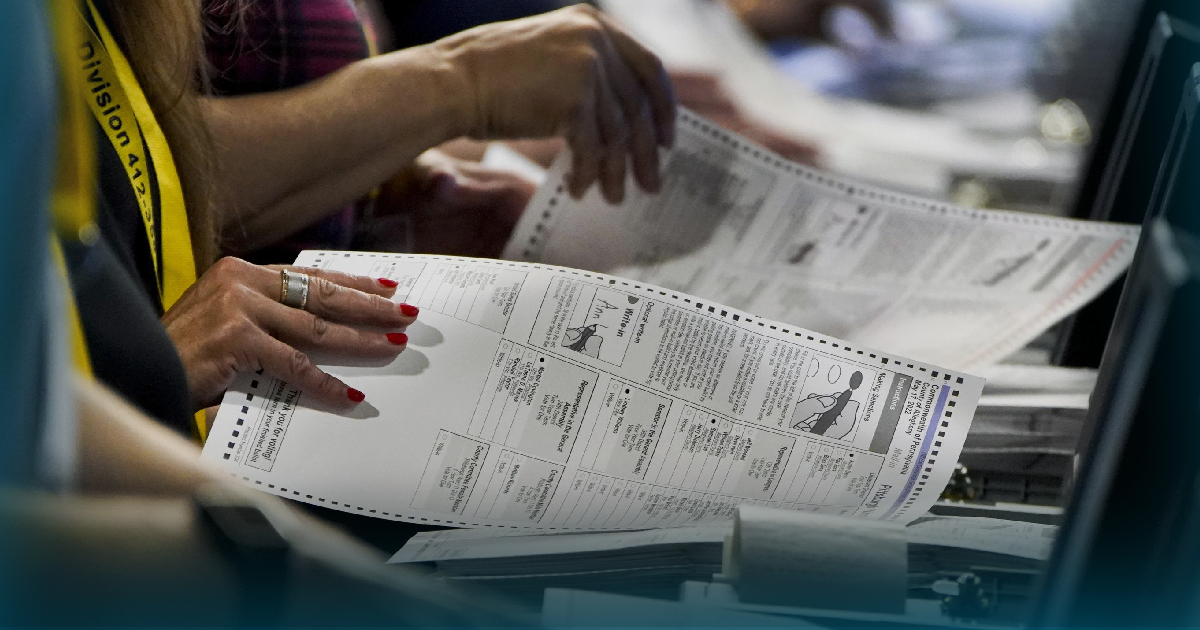Election officials are planning to tally votes far more quickly in 2024, hoping to avoid a repetition of the lengthy ballot count that left the fate of the presidential race undecided for days in 2020.
Many states that are considered to be battlegrounds have enacted new legislation to expedite the counting process and establish more effective processing methods. The quicker elections are counted, the quicker they’re called, and the shorter the window of time during which false information might proliferate—as was the case in 2020, when then-President Donald Trump intensified conspiracy theories over the vote total and declared himself the winner.
Democratic Secretary of State, Jocelyn Benson of Michigan, stated We’re going to continue to be laser-tuned into the space and time from when the polls close and the unofficial results are announced. However, 2020 also taught us that we should be ready for them to ramp up their disinformation outside of that time frame if the unofficial results do not match the goals or expectations of specific candidates.
Apart from expediting the counting of ballots and accelerating the process, postal voting is anticipated to decrease in comparison to 2020, when the epidemic caused an unparalleled number of voters to shun in-person polling venues.
But problems still exist. State-by-state variations exist in counting practices, and political squabbling has occasionally impeded the reforms that election workers desire. Election experts and officials caution that certain crucial states, most notably Pennsylvania, are still trailing behind and that in an extraordinarily close presidential race, the result may not be known for many days.
In response to the 2020 election, there is a scramble. That year, a presidential contest was postponed for days due to a mix of antiquated state legislation, a spike in mail-in voting, and a resource-constrained electoral apparatus.
The fact that a few swing states forbade the pre-processing of postal votes before Election Day was one of the main issues that year. It takes time to verify voters’ names, remove ballots from envelopes, and load ballots into tabulators in order to prepare mail-in ballots for counting. Votes are counted more quickly the earlier they are completed.
When the epidemic forced an unprecedented number of voters to cast mail-in ballots, several states waited days to complete the process, delaying the results until after Election Day. At the behest of election authorities, legislators in a number of those key states are permitting increased pre-processing as we approach 2024.

From a very tiny 10-hour window in 2020—which many election officials were unable to use since approval was received less than a month before the election—to over a week’s time in 2024, Michigan will have a larger pre-processing window. Wisconsin might soon permit one day of preprocessing, which is considerably better than nothing but still less than many election officials had requested.
Our state’s early voting option, together with related pre-processing and other components, will eventually enable us to present unofficial election results after polls close more smoothly and effectively, according to Benson.
She stated that as we prepare for tight elections in all of our states coming up in November and post-election issues and disinformation are growing as a result, election officials in the battleground states have been discussing ballot counting.
Additionally, several states have implemented legislation to improve public awareness of the number of votes still to be tallied, eliminating a degree of uncertainty that might help media outlets’ decision-making teams as they attempt to announce winners.
Georgia and Pennsylvania, for instance, now mandate that counties submit the number of votes still to be counted by midnight on election day.

I believe that similar to the 2022 cycle, a winner will be announced by 9:30 or 10 p.m., stated Republican Secretary of State Brad Raffensperger of Georgia. The races that were closer took a little longer. But that evening, we were just unable to decide due to the really tight races.
Not many major adjustments have been made in some battleground states.
State lawmakers have refused to permit the pre-processing of mail-in ballots, which frustrates Pennsylvania election officials because they are unable to handle the ballots prior to polls opening. Partisan warfare has frequently derailed the issue in Pennsylvania’s state legislature.
Frustration for Election Officials
Republican Philadelphia election commissioner Seth Bluestein stated It is certainly disappointing that the legislature was unable to come together and provide at least a few days of pre-processing. That hasn’t mattered in the recent municipal elections with low voter turnout. However, he noted that it might be difficult to tally all the votes swiftly if there is a greater turnout the following year and perhaps a tight victory at the state level.
But Pennsylvania stands out as a major anomaly.
A level of mail ballot preparation prior to Election Day is now permitted in 40 states and Washington, D.C., according to Rachel Orey, senior associate director of the Bipartisan Policy Center’s elections project. In 2020, this number was only 27.
Election results have never been officially announced on election night, which has long been a source of frustration for election officials. By midnight on election day, no state has finished tallying all of the votes cast; at the very least, voters who are serving overseas or in the military receive a grace period. Furthermore, media outlets announce results ahead of time rather than election officials, and the real election results are certified much later after the electorate has moved on.
The emphasis on certification, according to Democratic Secretary of State of Nevada Cisco Aguilar, is the incorrect way to look at it. This concerns the delivery of expected information to voters in Nevada.
Even Nevertheless, a highly close race can indicate that media outlets lack the statistical confidence to announce a winner. For example, if an election is within a recount margin, the Associated Press usually does not call it that. Furthermore, preprocessing times themselves are not a cure-all.
Also Read: Pro-Palestinian Demonstrators Impede the Macy’s Thanksgiving Day Parade


Leave a Reply